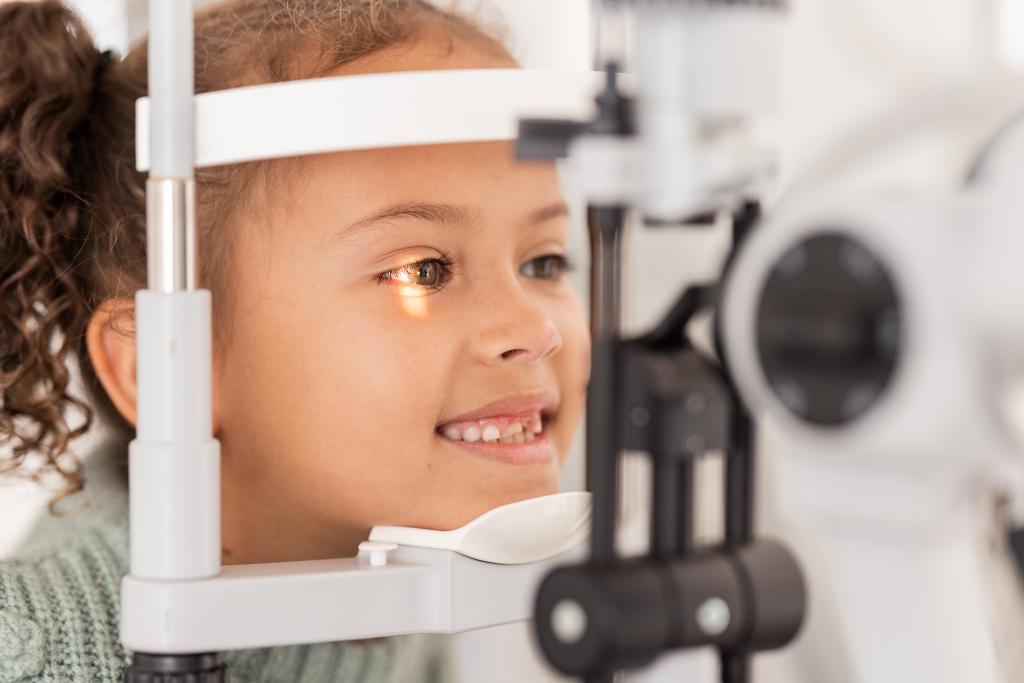Your child’s ADHD could actually just be an undiagnosed vision issue — how to find out
Are we seeing the signs and symptoms of ADHD clearly?
A 2024 report from the Centers for Disease Control and Prevention revealed a staggering uptick in ADHD diagnoses among American children.
But many of these young patients could actually be suffering from an undiagnosed problem that can be detected with a more thorough vision test, , board-certified optometrist, tells The Post.
What is functional vision?
ADHD, or , is a developmental disorder characterized by inattentiveness, hyperactivity and impulsive behavior — but Appelbaum says that many of these symptoms are “identical” to ones for functional vision issues.
Functional vision is compromised when the eyes don’t work together to support coordination or focus. Essentially, “the muscles responsible for clarity are having a hard time turning on, staying turned on, or having flexibility,” Appelbaum said.
A common vision diagnosis that looks like ADD or ADHD-like behavior is convergence insufficiency, an eye coordination problem that makes it difficult for the eyes to focus on near objects, such as books or computer screens.
“A change in eye movement is a change in attention, whether voluntary or involuntary. If we can’t control our eye movements, we can’t control our attention,” he said.
How functional vision problems impact behavior
According to Appelbaum, people with convergence insufficiency are three times more likely to be diagnosed with ADHD. But standard eye tests fail to accurately measure functional vision, focusing instead on eyesight and eye health.
“A thorough functional vision exam goes beyond just the ability to see; it looks at that eye-brain connection,” he added.
“Somebody that can make their eyes point in the same direction — great. But then after 30 seconds, if they have this fragile coordination, that’s going to be a kid who has ants in their pants or is listening to the teacher with their ears rather than with their eyes,” Appelbaum said.
Appelbaum said missed or misdiagnosed vision problems can result in unnecessary struggles in the classroom and beyond.
“Children can struggle with reading or navigating through space, or even with ball sports or social interaction, because the input from their eyes to their brain is scattered and not filtered appropriately,” he said.
What can be done about it?
Even though the eyes are the body’s dominant sensory system, without ever having a vision screening.
Appelbaum believes every child should have a thorough, comprehensive functional vision test before kindergarten to ensure they’re visually ready for learning and, eventually, reading.
Kids can literally go off medication after doing the right type of work… They can focus their eyes so they can focus their mind.
Bryce Appelbaum
Once a functional vision problem has been diagnosed, it can be treated and, in most cases, corrected with vision performance training.
“It’s like PT for the eyes, but really for the brain through the eyes,” he said. “With the right type of work, you can raise somebody’s awareness of what they’re doing so they can learn how to self-correct and self-monitor until the eyes and brain are working fluidly together as a team.”
Treating ADHD
One in nine children aged 3-17 is diagnosed with ADHD, but a 2021 reported “convincing evidence was found that ADHD is overdiagnosed in children and adolescents.”
For people with milder symptoms, “the harms associated with an ADHD diagnosis may often outweigh the benefits,” the researchers concluded.
ADHD is typically treated with a combination of behavior therapy and stimulant medication, the latter of which comes with a slew of side effects and drawbacks.
The used to treat the disorder — Vyvanse, Adderall, Concerta and Ritalin, to name a few — may be accompanied by adverse side effects.
appetite loss, difficulty sleeping, anxiety, changes in blood pressure and heart rate, and more. Drug misuse was also suggested among other “potential harms” noted by the CDC.
In 2022, the to manufacturers of ADHD drugs that it was concerned about “aggressive marketing practices” by companies — in particular, telehealth providers such as Cerebral — that could be driving excessive prescriptions.
Appelbaum believes children with behavioral issues rooted in vision problems can quickly and efficiently transition off these medications.
“Kids can literally go off medication after doing the right type of work because their eyes and brain are working together, and the need for stimulation is gone. They can focus their eyes so they can focus their mind,” he said.
For Appelbaum, the mission to educate parents about the relationship between vision and behavioral issues is a personal one.
As a child, he struggled with focusing in the classroom and responding on the soccer field. His father, an optometrist, and mother, an occupational therapist, “put together a plan of action to help facilitate the development that was necessary for me to soar in life.”
This plan included vision performance training. “This was 37 years ago. What took me years we can now accomplish in a matter of months based on innovations, new protocols. We see improvements rather quickly, especially when the brain has more opportunities for learning.”
Appelbaum maintains that while vision testing and training can benefit children diagnosed with ADHD, the positive effects are available to adults as well.
“Any brain at any age can learn new tricks,” he said. “We need to put our vision first and look into the eye-brain connection, which goes beyond just going to the eye doctor and seeing if you need glasses. We must look at the functional visual skills because so much of our potential can be unlocked through vision.”















